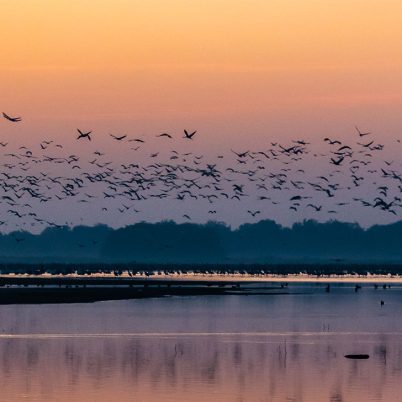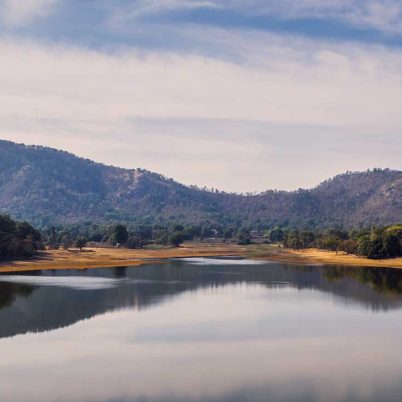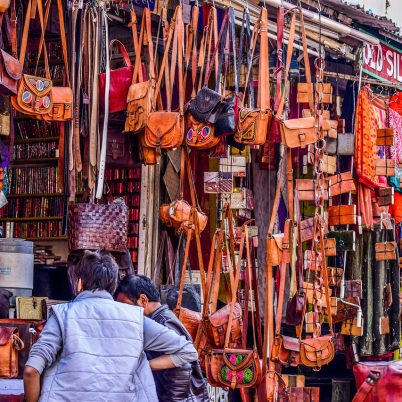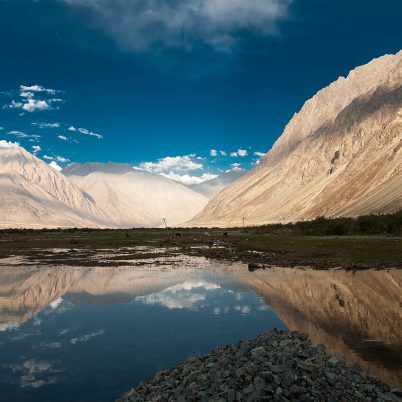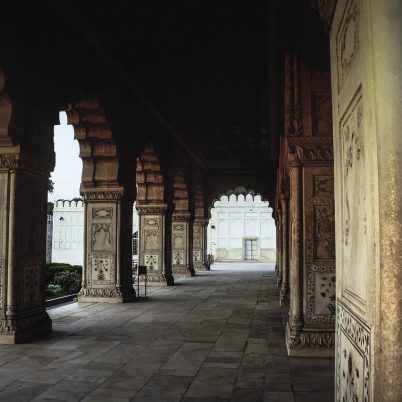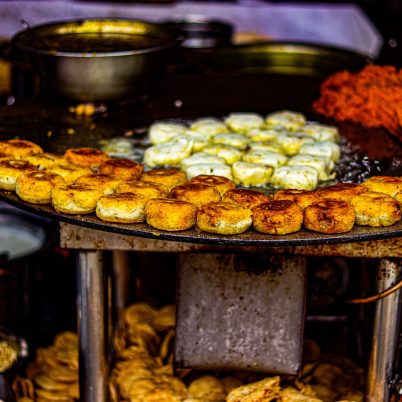Is street food in India safe for tourists to eat? The simple answer is yes, Indian street food is safe as long as you take some precautions and use common sense.
Indian cuisine is one of the most diverse, changing with every region. It is also one of the most delicious cuisines in the world – the flavor palette is such that there is something for everyone in this vast country. The best Indian cuisine can be found, surprisingly, on the streets.
You will often find that the freshest, cheapest, and tastiest food can be found on the streets of India.
India is a popular tourist destination, but many tourists are warned against eating street food in India, because it is considered to be unsafe. But if you exercise some precautions, gorging on Indian street food will be one of the best experiences of your life – there is just so much that street food can offer, and you will be missing out if you do not try food at any of the street food stands you will encounter on practically every road you walk.
Why is street food in India considered unsafe?
India in the media is almost always shown to be crowded, narrow, and unhygienic. However, that is not how most of India is, and this portrayal keeps tourists away from consuming street food in India.
Another factor is that tap water in India is not potable. Since water is used in almost all food preparations, tourists may have some hesitation about trying street food not knowing where the water comes from.
Also, traveler’s diarrhea is nicknamed Delhi Belly, since Delhi is a major food hub in India, and it just rhymes well. But when a city’s name is associated with an upset stomach, it doesn’t exactly promote food in a good way.
Tourists usually need a few days to adjust to Indian food – the water, ingredients, and spices are a lot different here, which is why many tourists face some discomfort after eating Indian food for the first time. But it is not always the street food at fault. It is just a shift in the type of food your body is used to.
It is understandable that tourists are wary of street food in India. But sometimes, street food made in front of you can be much more hygienic than food in a restaurant whose kitchen you cannot see.
What to eat
Fried and roasted foods
When in doubt, you can always go for fried and roasted food items. These items are heated in very high temperatures, killing any bacteria that might be present.
Don’t worry if you see a food vendor toss in a half-cooked item into oil to fry it – in India, street food is usually made partially cooked in bulk, and then fried when necessary. It is completely safe. However, do check the quality of the oil. Many vendors reuse the same oil for days, which can be harmful to your health.
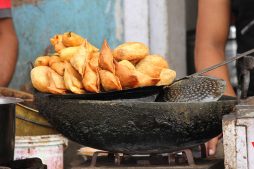 Fried street food
Fried street food
Fresh fruit juice
You will find many juice stands across India serving fresh and exotic juices. While pre-made juices or anything that is poured from a jug or served in glass can be a risk, you can opt for juices which have been made with fruits freshly squeezed in front of you. You do not know how the utensils have been washed and cleaned.

Tea and coffee
Tea, or chai, and coffee, are okay to drink almost anywhere in India. Even if the tea stall doesn’t look the most hygienic, you can be sure that the tea or coffee will be good and fresh. Check out places where there is a crowd waiting for their hot drink. Because of the crowds, you know that the milk is fresh and the tea or coffee is boiled and served hot and fresh in front of you.
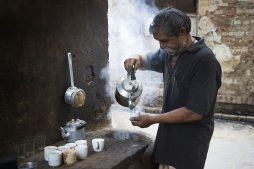
Cooked sauces
While it is recommended that you avoid freshly made sauces like chutneys, since they use water you might need to stay away from, there are a few hot sauces you can definitely go for.
In north and northeast India, you can try momos, or dumplings, which are accompanied by some sauces and chutneys that are fully cooked with different spices.
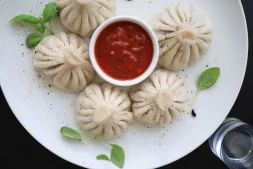 Momo chutney
Momo chutney
What to avoid
Tap water
Never drink tap water in India. Only drink filtered water or bottled water from a good brand like Bisleri or Kinley. Most decent restaurants serve filtered water, but it is always better to ask. You will find that most locals also prefer bottled water while eating street food, so make sure you also drink only bottled water. Avoid water-based foods like gol gappas and shaved ice as well.
However, a few places in the Himalayan regions have their own mountain water source. You can drink the tap water there – it might be even better than bottled water!
 Do not drink tap water in India
Do not drink tap water in India
Ice
In a similar vein, you need to avoid ice. The hot Indian climate can often tempt you to get a cool drink, but we don’t really notice the ice that goes into it. Often, ice is homemade, and there is no way to know which water was used, or whether it is safe or not. So just to be safe, avoid ice altogether, whether you are eating street food or at a good restaurant.
 Avoid ice in India
Avoid ice in India
Dairy-based food, especially during monsoons
Dairy, especially yogurt, spoils quickly during the monsoon season. So try to avoid dairy-based products like lassi during monsoons from street stalls, or yogurt-based food like dahi puri.
If you do want to try some, go to fast food chain restaurants which will provide you with the same items in a more hygienic way.
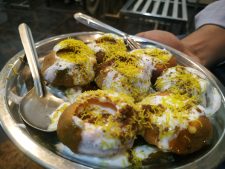 Dahi puri
Dahi puri
Cut fruits and salads
You do not know the kind of water that was used to wash fruits and vegetables, so it is best to avoid them. Always consume freshly cooked vegetables and opt for peelable fruits like bananas, oranges, mangoes, and pineapples.
If you do want to try out other fruits or vegetables, make sure you only choose fresh, uncut fruits and vegetables and wash them thoroughly with bottled water before consuming them.

Tips to follow to enjoy street food in India
Research popular recommendations
Try to find popular street food stalls in the areas you will be visiting. Thanks to the internet, you can find all the information you need on food blogs, social media, and travel forums. Look for cleanliness, quality, and taste while looking at reviews.
While you are in here, do not hesitate to ask the locals for recommendations. They might have some of the best advice and can help you discover some hidden spots that might not be known to other tourists.
Eat where the locals eat
Check out places where there is a crowd of people, especially people with families and kids – these places will usually be more hygienic and cleaner than others, since most parents will not let their kids eat unhealthy food.
Plus, if the place is crowded, there are higher chances of food being fresher, as the food there will constantly need to be cooked and restocked. And if so many locals are eating it, the food is bound to be delicious.
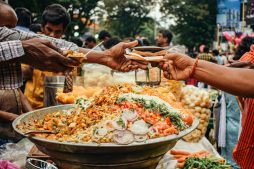
Check the cleanliness of the place
Do not eat at a place if the utensils used to cook and serve the food are dirty, or if the surroundings are unclean. Even if the food is made fresh, the lack of hygiene in other places can lead to diseases.
Use sanitizing wipes to wipe your plates and spoons, even if they look washed. You can bring your own disposable cutlery if possible. Avoid any places where you can see mosquitoes and flies buzzing around the food.
Avoid street food in the rainy season
Consuming street food during monsoons is not very good for health. The stalls outside often get contaminated with mosquitoes, flies, and other insects. The humid weather also accelerates bacterial growth. Food also spoils quickly in hot and damp weather.
Manage the spice levels
India is the land of spices, and naturally, the flavorful Indian cuisine is full of complicated spice levels that tourists may not be accustomed to. To get the most out of your authentic Indian street food experience, start with milder dishes and gradually increase the level of spice. If you are doing a food tour, try to schedule it 3 to 4 days into the trip, so that your stomach has time to get accustomed to the Indian flavors first.
If you find Indian food too spicy, do ask for less spice in the dishes. Food vendors are usually accommodating and can adjust the spice levels according to your requirements.
Do not overeat
Indian street food is mouth-watering, and you will not be able to resist having more. But keep in mind that if you are not used to spicy food, your stomach will not be able to process this sudden overload of unfamiliar flavors and spice. So make sure that whatever you consume, you do so in moderation.
Stay hydrated
Drink plenty of water. Staying hydrated will help your body with digestion and prevent constipation. Since India is a tropical country, you will also feel fresher if you are drinking a lot of water. Plus, with all the spicy street food you will be consuming, you will definitely need a lot of water to accompany the food.
Eat vegetarian food
Street meat in India is generally best avoided, unless you are visiting places that are especially famous for their meat dishes. You do not know where the meat is coming from, and there are a lot of factors that can spoil the meat.
If you are confused, you can always opt for vegetarian food. India is a haven for vegetarians, and you will be spoilt for choices when it comes to vegetarian street food in India.
On the other hand, if you are craving seafood, make sure you only eat seafood at places along the coast. You can be assured that you will be served the freshest sea produce. Do not order seafood inland, because you can never be sure of the quality of the produce.
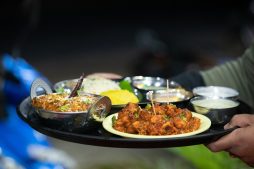 Vegetarian street food
Vegetarian street food
Carry basic medication with you
Carry ibuprofen, basic medication for diarrhea, and mild stomach cramps. You can also carry some probiotics with you and an electrolyte solution, although you can easily find it in any of the pharmacies in India.
Also keep sanitizers and anti-bacterial wipes with you at all times.
When in India, your trip won’t be complete without trying the mouth watering street food it offers. As delicious as it is, street food in India or anywhere in the world comes with certain risks. Keep in mind all the points mentioned in this blog, but more importantly, trust your gut. Even if the safest food doesn’t feel good to you, leave it.
India is a paradise for food lovers, so if your mouth is watering after reading this blog, contact us right away and we will plan the perfect trip to India for you! With the best recommendations and your safety before anything else, we are here to help you have the best experience in India.
helping you travel your way
Everything you need to know about India is here We have tried writing about everything you may need help with for your trip to India, If you need help in planning a trip to India Get in touch with us to to plan your trip of a life time.


